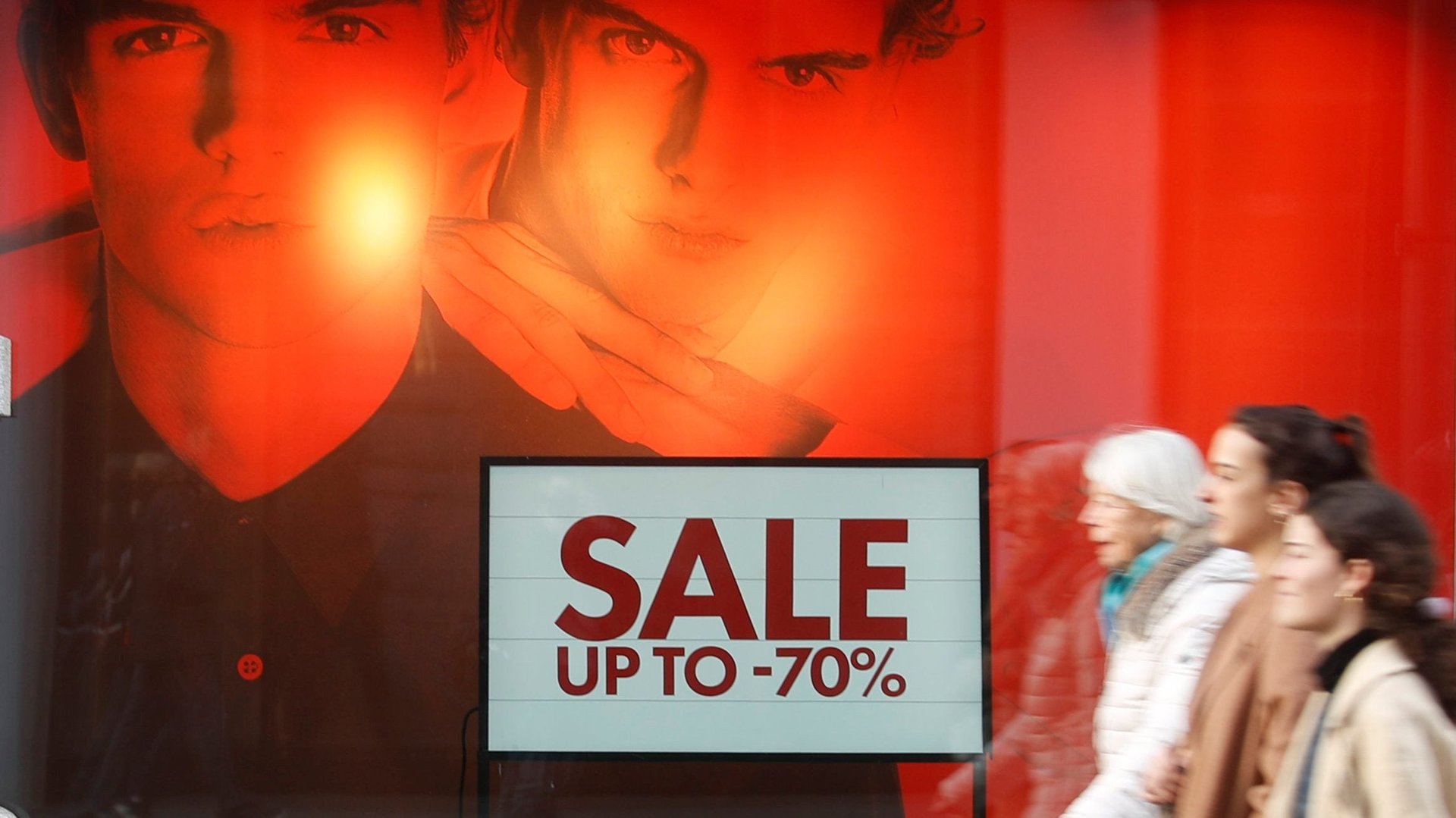Covid-19 is going to make fashion’s discounting problem much worse
For fashion retailers, one of the lingering and most damaging effects of the 2008 recession was a dependence on discounts. After their sales tanked, companies leaned on promotions to clear out all the inventory sitting unsold and to get shoppers buying again. The problem, however, was that customers came to expect discounts and even years later hesitated to buy clothes at full price. Fashion players in the middle of the market—including mall retailers such as Banana Republic, department stores, and many of the brands carried by department stores—saw their margins squeezed and brand cachet diminish as they became known for always being on sale.


For fashion retailers, one of the lingering and most damaging effects of the 2008 recession was a dependence on discounts. After their sales tanked, companies leaned on promotions to clear out all the inventory sitting unsold and to get shoppers buying again. The problem, however, was that customers came to expect discounts and even years later hesitated to buy clothes at full price. Fashion players in the middle of the market—including mall retailers such as Banana Republic, department stores, and many of the brands carried by department stores—saw their margins squeezed and brand cachet diminish as they became known for always being on sale.
Now the Covid-19 crisis looks set to repeat the cycle and make the problem even worse.
Retailers around the US, UK, and Europe have closed stores as part of social-distancing measures, while many shoppers have paused spending on all but the essentials anyway. Unsold inventory is quickly piling up, prompting companies to cancel or suspend orders for new clothes and in some cases to stop taking deliveries at already-full warehouses.
While some of the less season-specific inventory could sell later, a good deal of the stock companies bought for spring is already aging past its prime and items for summer will miss critical selling time. Much of these collections and clothing deliveries to come may go unpurchased regardless, with shoppers likely to cut discretionary spending as a recession possibly worse than 2008 sets in.
McKinsey and Business of Fashion, a fashion trade publication, offered a grim forecast of the result in a new joint report on how the coronavirus crisis will affect the fashion industry: “Companies will turn to steep discounting to clear inventory for the rest of the year at a minimum, with a risk that ‘the contagion of deep discounting could spread as quickly as the disease’ throughout the industry, reminiscent of the discounting culture that took hold during the 2008 financial crisis and has dogged the industry ever since,” the report said.
The repercussions will be worse for some retailers than others. The report predicted middle-market designers and retailers, which were suffering most before the outbreak, “will be hit hardest, as cash-strapped shoppers trade down to the value segment for essentials and middle-class consumers turn more to heavily discounted affordable luxury and premium goods.”
The luxury segment should see customers return quickest to paying full-price, as in 2008. But the report noted luxury companies face a heightened risk to their reputations depending how they handle clearing their inventory. Steep discounts in their own stores won’t inspire shoppers to keep buying at full-price in the long term, so they, like others, may look to offload inventory to a variety of other channels, such as their own outlets or off-price chains.
But that carries its own danger, according to the report. Off-price retailers have continued to attract more shoppers. Under the current circumstances, they’re set to grow even more, and could cannibalize full-price sales at other retailers.
In the meantime, discounting has already started. High-end online retailer Net-a-Porter had 30% of its offering on discount as of March 25, versus less than 1% last year, according to Edited, a retail technology firm that tracks fashion e-commerce. Another analysis this week found almost half of the products online at US mall stores were already on sale.